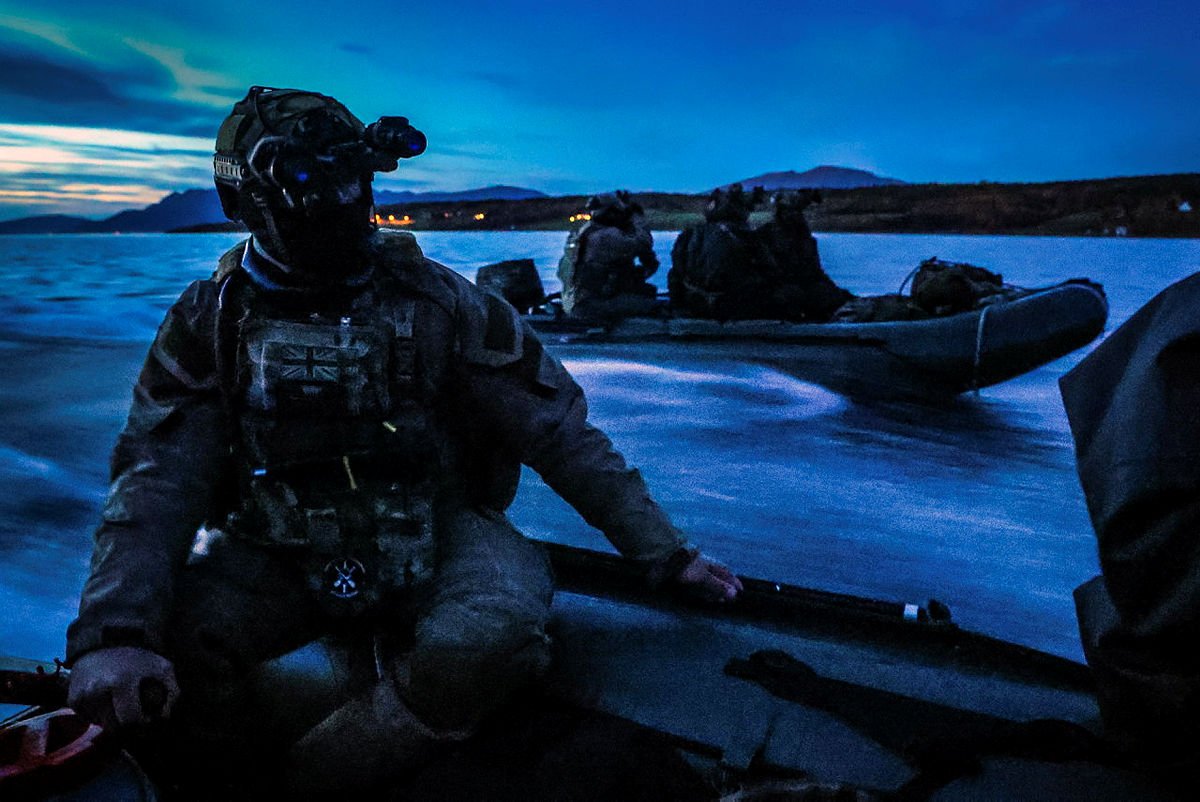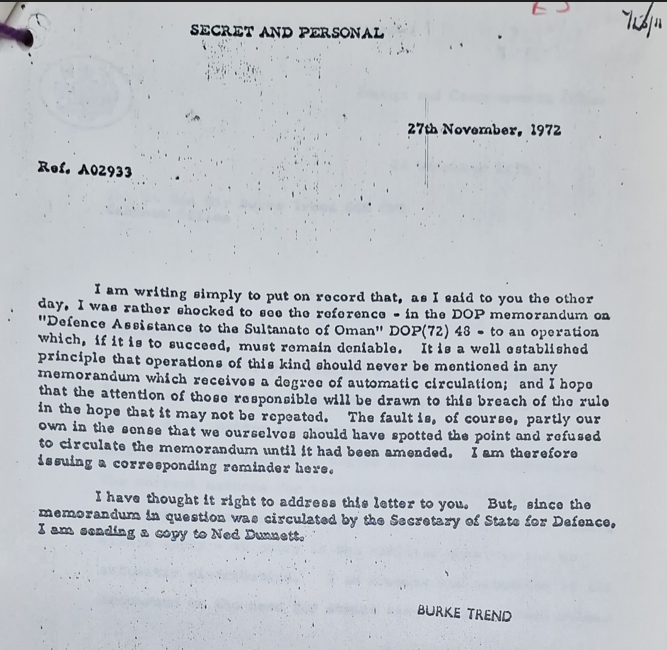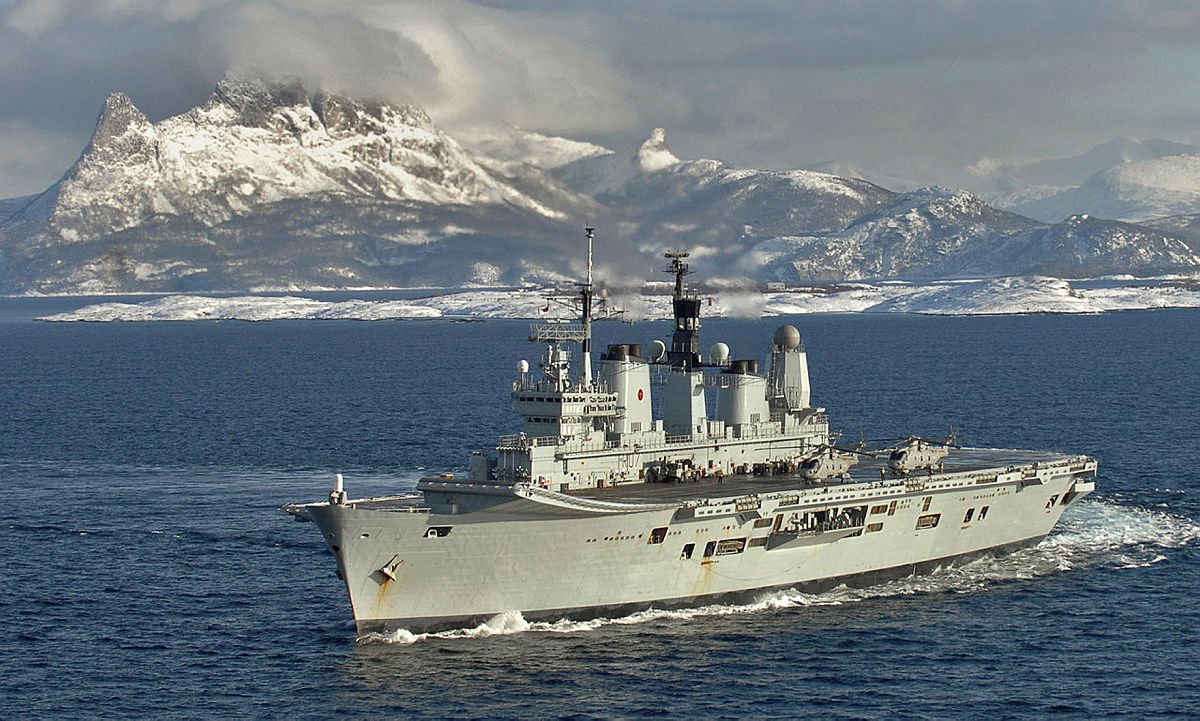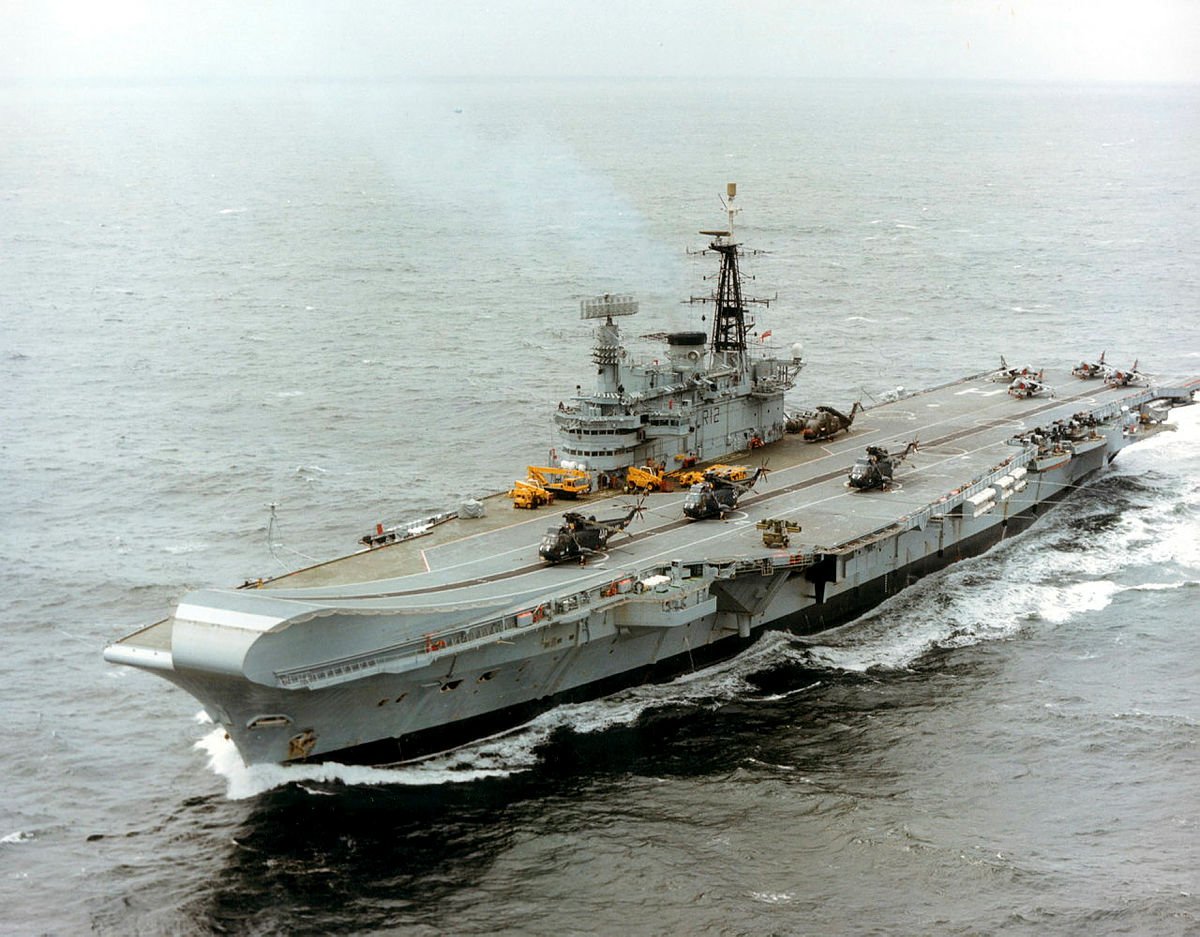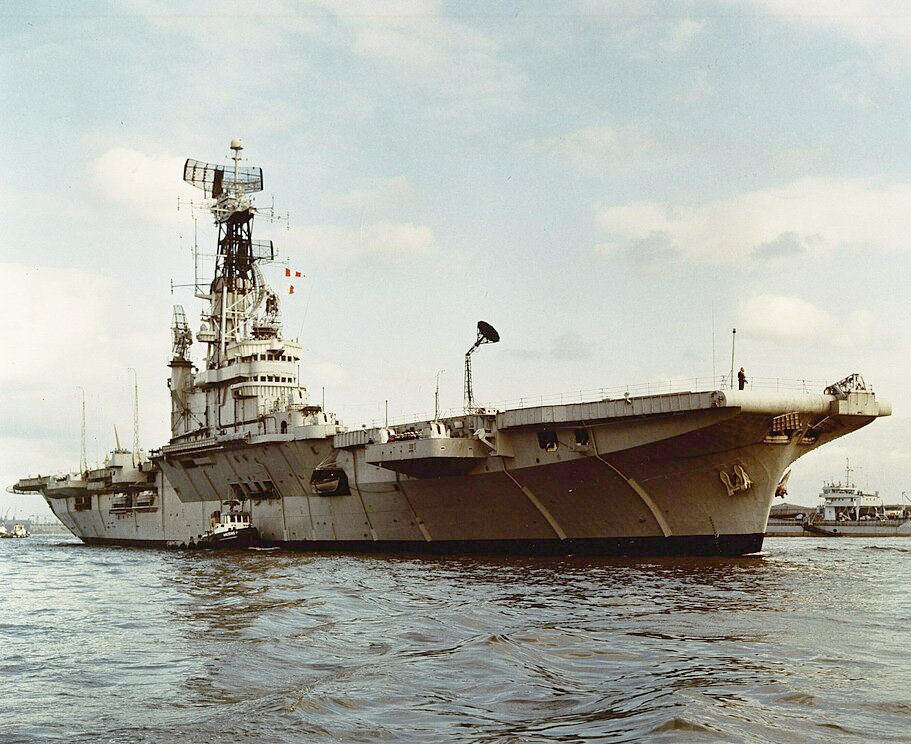This is one of the final design options for the Type 43 Destroyer. This little known cancelled project to succeed the Type 42, was far more important than generally realised, and far more capable too.
A short thread on the forgotten destroyer design. /1
A short thread on the forgotten destroyer design. /1

The Type 43 emerged in the late 1970s as the successor platform to T42, intended to carry Seadart to provide air defence to task forces operating globally, but particularly in the North Atlantic. 

By 1979 the goal of the design was to help the RN get 20 AAW platforms in the fleet. The aim was to maximise the number of engagements that each ship could manage, with the T43 capable of handling 4 channels of fire, vice the 2 of the T42 

Type 43 was designed from the outset to be a highly capable platform, able to manage the highest levels of threats. The goal was to make it survivable, potentially using 2 x Sea Dart & Seawolf missile launchers. This much is well understood. But, then 'things got weird' 

As the design grew, so did the aspiration for it. The next requirement bolted on for the T43 was to go from being AAW, to also being an ASW platform as well. Now she was to operate Seaking/Merlin sized helos, and deploy Towed Array or VDS to prosecute submarine targets. 

To make it even more ASW focused, the RN decided to add the requirement to deploy Ikara, essentially a flying torpedo, to the design! This was now becoming a monster ASW and AAW platform, only mirrored by HMS BRISTOL. 

To ensure that the gunnery officers were kept busy, it was intended to fit a 76mm Otto Melara gun, and MM38 Exocet missiles as well to provide a punchy anti-surface warfare capability. Suddenly you have a monster of a platform on your hands... 

The result was a platform capable, on paper, of carrying out simultaneous task group area air defence operations, and carrying out Towed Array sonar work against Soviet submarines. Basically a 42/22 combo on one hull - a very bold strategy. 

Multiple designs were explored, but the definitive version by 1979 that the RN seriously looked at was the 4 COF design although debate raged about fitting one or two Seadart launchers (and never seems to have been finalised). 

The ships particulars were huge. Of the four designs, they were 6400 standard - 8600 deep displacement, and 156- 166m long with 398 - 435 crew. These would have been the size of COUNTY class DDGs - very large and very capable. 

They were expensive platforms - the cost estimated at £199 - £224m per hull (around £1bn in 2025 prices), when the entire budget was around £15bn per year. The RN expected to spend £2.5bn on the project for 10 ships, the same as they planned to spend on the TRAFALGAR class SSN. 

The design the RN fell in love with was incredible, and probably the most balanced surface ship design of the Cold War. It would have been a superb combination of AAW and ASW capability on paper, even if in practise it was hard to do both missions at the same time. 

The planners and the requirements team came under heavy pressure to defend their position. This image shows the sort of defence robustly mounted to the Vice Chief Naval Staff, explaining why the RN NEEDED the 'Ferrari', not the 'Ford Focus'... 

The requirements team loved the design, but VCNS felt that it had no prospect of success. When an RN 3* is advocating buying the RAF more Tornado jets to do air defence over buying an air defence destroyer, you should realise your project is in trouble! 

Wiser heads rapidly prevailed in the RN and noted that the plan would not meet with Ministerial support, and that there would be other ways of building the ship. This note sums up the Naval Staff view though on why Type 43 was the answer to the problem. 



The Controller of the Navy probably sounded the death knell for the project with firm direction that a Type 43 should cost no more than 2/3rds the cost of 2 x Type 42. A harsh but necessary dose of realism. 

The plan was to order the first Type 43 in 1984/1985, and the first entry to service in 1989. It is entirely possible that if ordered, they would still be in service today, as they would have been built on similar timeframe to the Type 23. The RN would likely not have got T45... 

Even in 1979 the view was the hull would last 20-30 years and had the space to be modernised to carry VLS silos and potentially AEGIS like capabilities. Its likely we'd have them in service today in some way. 

The T43 was cancelled in 1980, with a brief focus on the T44 (an austere version based on T22 hull) not progressing far before the Nott Review of 1981. The RN then looked to the NATO Frigate Replacement and Horizon project before finally building T45. 

HMS DARING entered service in 2009, 20 years after Type 43 should have done so. In size and dimensions, the two designs are not dissimilar, although T45 is a far more capable AAW platform. It will remain 'the one that got away'. 

This thread on the Type 43 destroyer may interest @NavyLookout @UKDefJournal @EngageStrategy1 @fightingsailor @navalhistorian @c21st_sailor @DrRowanAllport @ajcboyd @BeaverWestminst @IBallantyn @CovertShores @TomSharpe134 @simonharley @alessionaval @Strategyforwar1
• • •
Missing some Tweet in this thread? You can try to
force a refresh


